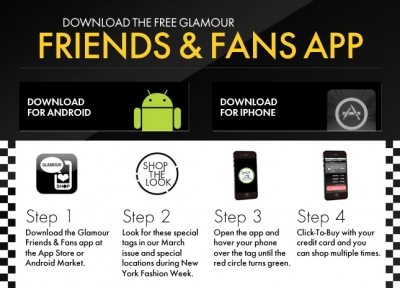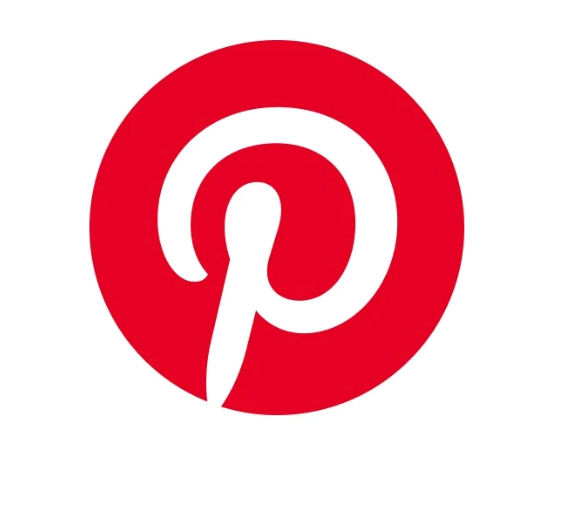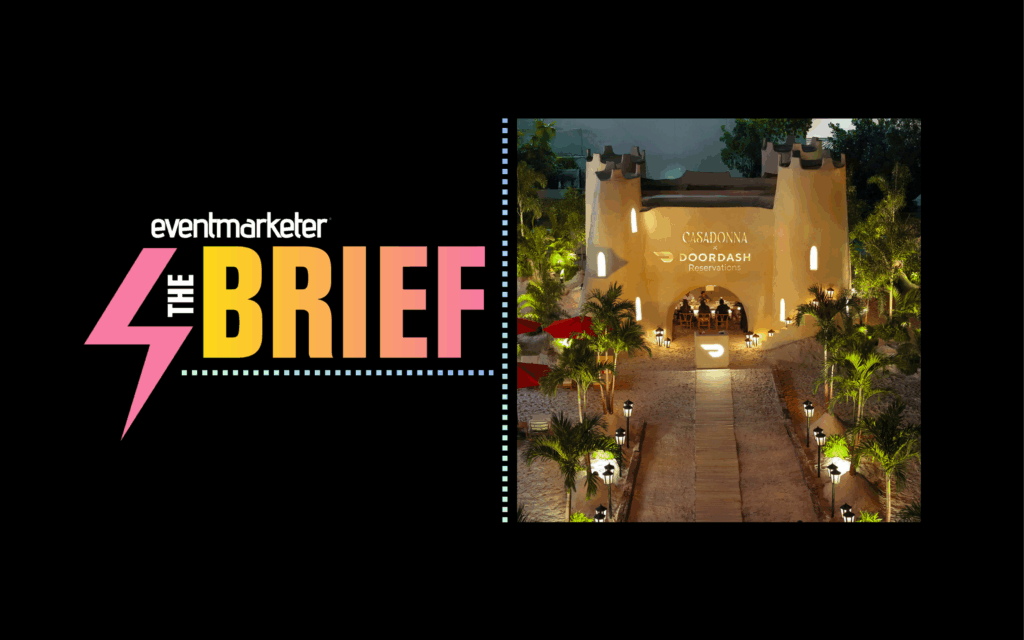Barcode and QR code scans have become common tools for driving mobile traffic from print or out-of-home ads to Web sites and social pages. But a new partnership between Conde Nast’s Glamour magazine and mobile activation provider SpyderLynk is testing the water for another kind of connection: from mobile tags to actual mobile purchases.
The pilot for this platform will take place during New York’s Fashion Week. From Feb. 9 through Feb. 14, 50 specially-equipped taxis will circulate among the most popular venues for the week’s activities—such as Lincoln Center and New York’s old meatpacking district on the Lower West Side—offering free rides primarily to Fashion Week attendees. The cabs will operate only among those designated locations.
Those riders will get into cabs equipped with print ads for beauty product lines from L’Oreal USA’s Lancome and Yves St. Laurent brands and special programming content on the seatback TV screens: demonstration videos from Glamour editors and experts on how to use the cosmetics in the test. Riders will then be able to take a photo of the “Shop the Look” SnapTag from SpyderLynk and send it as a text message to a short code. If they have a smartphone, they will be instructed by the video content how to download the free Glamour Friends & Fans scanner to their phones and simply scan in the SnapTag.
SpyderLynk servers will then send riders a mobile link to a checkout page where they can check off the products they want to buy. If they have not made a purchase from a “Shop the Look” tag before, they will then be delivered to a billing and shipping page from mobile payments company Billing Revolution and prompted to enter their credit card information and open an encrypted “mobile wallet”. The L’Oreal purchases will then be cleared through this wallet in transactions managed by Billing Revolution.
 “There are two ways to approach a mobile wallet,” says Nicole Skogg, CEO of SpyderLynk. “One is what Google Wallet does, where you store information on your handset and can use it at checkout via [near-field communications]. The other is to do what PayPal does and store your information in the cloud. That’s what we’re doing here.”
“There are two ways to approach a mobile wallet,” says Nicole Skogg, CEO of SpyderLynk. “One is what Google Wallet does, where you store information on your handset and can use it at checkout via [near-field communications]. The other is to do what PayPal does and store your information in the cloud. That’s what we’re doing here.”
Skogg says that a majority of those who take part in the test will probably just use the ride to watch the video demos and scan the “Shop the Look” tag, waiting until later to choose their purchases, set up the mobile wallet and convert. “That’s the beauty of this: you’re basically bookmarking the web content and can then complete the purchase whenever you have the time,” she says. “With the scan, you have everything you need to finish the transaction.”
Glamour enlisted L’Oreal, its biggest print advertiser, to take part in this test and also negotiated with Verifone, the company that runs the TV and credit-card payments for New York’s cabs, to enlist the vehicles and drivers. Glamour will defray the total costs of the cab rides during the pilot.
Glamour has teamed with SpyderlYnk on SnapTag print-based promotions in the past. Most recently, the two offered readers a chance to friend brands or enter promotions from print ads in the magazine’s September 2011 issue with the launch of SpyderLynk’s Social SnapTags platform.
“A lot of people in this country have looked at what Tesco has done in South Korea, making subway walls shoppable via mobile phone,” says Skogg, referring to a lighted photo wall where commuters can scan products from the Tesco HomePlus convenience chain, send them to the retailer as orders, and take delivery at home that evening.”I think the question on the mind of everyone in the U.S. is, ‘When will we be ready for that?’ We believe this can deliver that same mobile commerce experience.”
“What we’re excited about with SnapTags is that we can turn almost any advertising surface into a shopping surface. It’s early, but I think you have to stay ahead of consumers and give them things to try out.”
Among other metrics, SpyderLynk and Glamour will be watching to see what types of phones are most used for making purchases during this test, and what the average lag time is between scanning the tags and completing the transaction.



